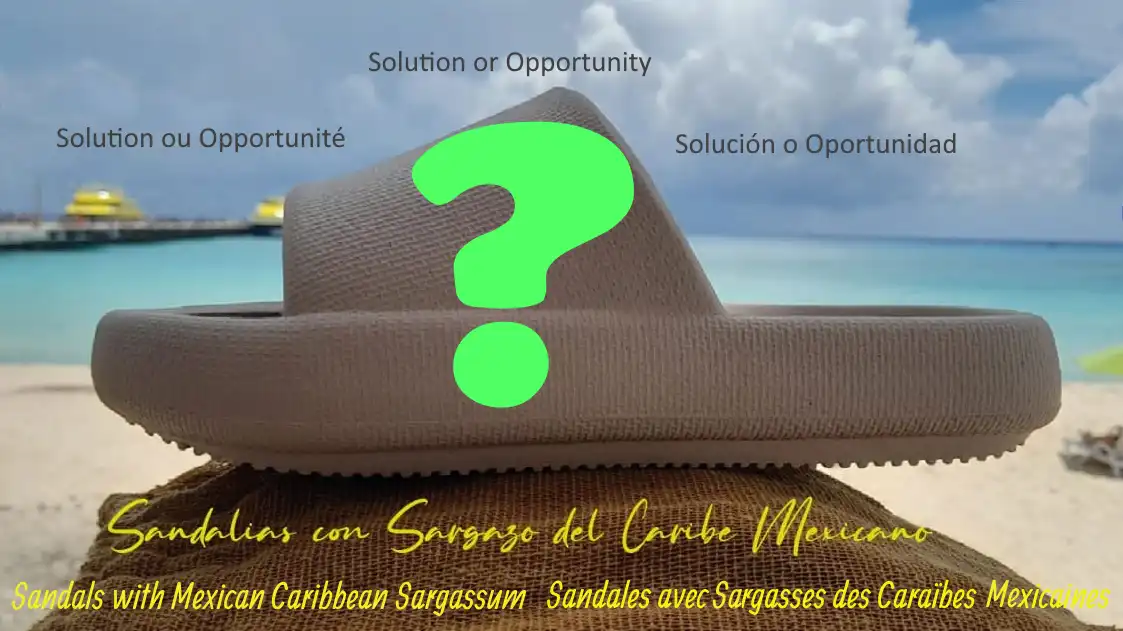Social media has recently circulated an intriguing announcement: an entrepreneur from Quintana Roo, Mexico, claims to have found a creative solution to the global issue of sargassum. These invasive brown algae affect over 30 Caribbean countries, posing a major ecological threat. This Mexican entrepreneur asserts to have developed sandals made from these algae, offering an opportunity to turn this ecological disaster into an opportunity!

The Mexican company would have collaborated with laboratories and specialized businesses to create an innovative product. After a year of development in collaboration with influential partners, the entrepreneur explains the manufacturing process. Sargassum freshly harvested from the sea is washed, dried, and then reduced to a clean powder. This powder is then combined with a polymer, ethyl vinyl acetate (EVA), in laboratories in Mexico. After being reduced to grains, the material is molded to form sandals, to which a synthetic leather insole based on sargassum is added.
This initiative aligns with the current trend of recycling sargassum into various products such as bricks, paper, and even eyeglass frames. The goal is noble, aiming to mitigate the devastating impact of this invasion, widely attributed to human pollution.
However, before celebrating this advancement, it is essential to carefully analyze the announcement. EVA, used in the sandal manufacturing, is a type of plastic. Similarly, synthetic leather is a fabric coated with plastic. These materials may raise concerns about their actual ecological impact.
Quick research reveals that these sandals are potentially mass-produced in Asia, specifically in South Korea. They are then distributed worldwide by Asian online marketplaces. This raises questions about the authenticity and ecological aspects of these sandals. Does the Mexican company ship sargassum powder abroad to be incorporated into plastic sandals resold in Mexico?

The question of the glue used to attach the plastic sole to the sandals also remains unanswered. The entrepreneur proudly announces that the sandals have been approved for use on certified beaches in Playa del Carmen, suggesting that special permission might be required for using these shoes in certain regions.
The selling price of sargassum-based sandals, set at 777 pesos or 40 USD ( source: La Verdad Noticias), also raises questions. With Asian online marketplaces offering prices as low as 3.62 USD, it is legitimate to wonder if the high cost of Mexican beach sandals includes the transportation of sargassum powder to the other side of the planet.
A crucial question remains: what is the actual percentage of sargassum in these sandals? Information indicates that only 2% of sargassum is integrated into the composition of the sandals, but it is unclear whether this refers to the sole or the sandal itself.
Ultimately, this initiative, although presented as innovative, raises concerns about its real effectiveness in mitigating the impact of sargassum. The proposed solution could potentially lead to a plastic pollution invasion, posing crucial questions about the actual environmental and carbon impact of this “invention” for the Riviera Maya and potentially for all affected Caribbean countries, if it were to expand.
If, like this anonymous correspondent, you would like to submit an article on sargassum, feel free to contact Sargassum Monitoring !
